Borussia Dortmund: The Next Fresh Start
Borussia Dortmund had a season to forget in year one after Thomas Tuchel. With the Peter Bosz experiment having failed, it’s Lucien Favre’s turn to usher in a new era for the Black and Yellows. It was evident after only a few training sessions that the Swiss remains a coach with a ruler and calliper.
Tops and flops alternated in the last few years in Dortmund’s transfer dealings. For every Ousmane Dembélé there was an Andriy Yarmolenko, for every Manuel Akanji a Sebastian Rode. The club’s bosses again took some risks this summer. For example by investing some €20 million in Thomas Delaney. The Denmark international could become valuable as a physical No. 8 or an instigating No. 6–or quietly disappear through the back door after one or two years. Something similar goes for Marius Wolf, who suddenly wears a Black and Yellow jersey after playing one strong season for Eintracht Frankfurt. Goalkeeper Marwin Hitz, full-back talent Achraf Hakimi, left-footed defender Abdou Diallo and world-renowned No. 6 Axel Witsel rounded off BVB’s incoming activities.
The bosses did an borderline terrific job in getting rid of players who were no longer needed. Yarmolenko left the club after an up-and-down season, going to West Ham United for €20 million—praise be to the overheated English market. Andre Schürrle went on loan to Fulham. Sokratis moved to Arsenal, Gonzalo Castro to VfB Stuttgart. Neither one of those four really suited the high demands Dortmund still have especially of their more experienced and highly paid players.
That leaves a squad of 29 players that, especially in defence and midfield, seems balanced and offers an appropriate amount of diversity in its types of players. The large number of creative attacking players, with Marco Reus front and centre, would promise a flair of street football if it wasn’t for Favre, who naturally prefers a focussed playing style after winning possession and a steady approach to build-up situations. The one distinct weakness in the squad remains the striker position. If Dortmund are to enter the season in a 4-3-3, as seems highly likely at this point, Maximilian Philipp and Alexander Isak would be the current options up front. Philipp got the nod in most test matches and is a classic small-ball striker who could also form a fluid two-pronged attack in a 4-4-2 with Reus. A physical centre-forward, which BVB always had in some form over the last years in the likes of Lucas Barrios, Robert Lewandowksi and Pierre-Emerick Aubameyang, is currently missing.
Formation Questions
The big questions surrounding the signing of a new head coach, that are also well-covered by the media, revolve around potential personnel decisions and the formation to start matches. Favre almost exclusively had his team play in a 4-4-2 at Borussia Mönchengladbach. At OGC Nice, on the other hand, he proved himself to be more flexible and often put his trust in a back three to start his tenure, only to move to a 4-3-3 relatively quickly. That formation, that half the world is playing in some variation at the moment, has also emerged during the summer as his preferred system for Dortmund.
Considering the personnel and talent level at hand in midfield, that decision doesn’t seem far-fetched. In Witsel, Julian Weigl and Nuri Şahin there are a number of qualified anchors in holding midfield available to Favre. In the final test match of the summer against Lazio even Delaney played in that position and did well. In the No. 8 spots Mario Götze, Mahmoud Dahoud, Raphaël Guerreiro, Shinji Kagawa, Sergio Gómez and Delaney are at Favre’s disposal. With that selection of talent, the Swiss could certainly experiment a little and react to opponents or situations during the game without changing too much in the general structure. Tactical adjustments by changing personnel are a preference of many coaches, after all.
The Emphasis
Ultimately this kind of numbers game is only relevant to gauge how Favre wants to pattern the spacing and positioning on the pitch. We can indubitably consider the 60-year-old to be a coach who first and foremost thinks from the point of defending. Dortmund seemed to be organised quite tightly especially in the first two pressing phases, of which we’ll talk about later. Differently to his Gladbach days, however, Favre pushes for winning the ball in the middle third of the pitch instead of trusting in a deep block close to his own penalty box that will either force the opponent away from the goal or force him into bad shot selections.
Consequentially, Dortmund scored a number of goals during the summer after winning possession and playing quick transitional moves, in which the players most often switched play from where they won the ball and broke through on the ‘underloaded’ wing. This overriding aim came to be apparent quite soon, while the execution in pressing varied from game to game. Against Liverpool, for example, Dortmund defended with two wing-attackers pushed high up the field who orientated themselves quite clearly towards the Reds’ full-backs and ran at them from the inside when one of them received the ball. Against Manchester City, on the other hand, the wingers focussed on the half-spaces in City’s No. 6 space in collaboration with the central striker. When the ball went into one of the two zones and reached an opponent, BVB tried to double that player instantly. Against Benfica, Götze and Dahoud as a double-eight pushed towards the two centre-backs of the Portuguese side, while Philipp remained close to their No. 6 and the other three BVB midfielders provided cover almost on a straight line.
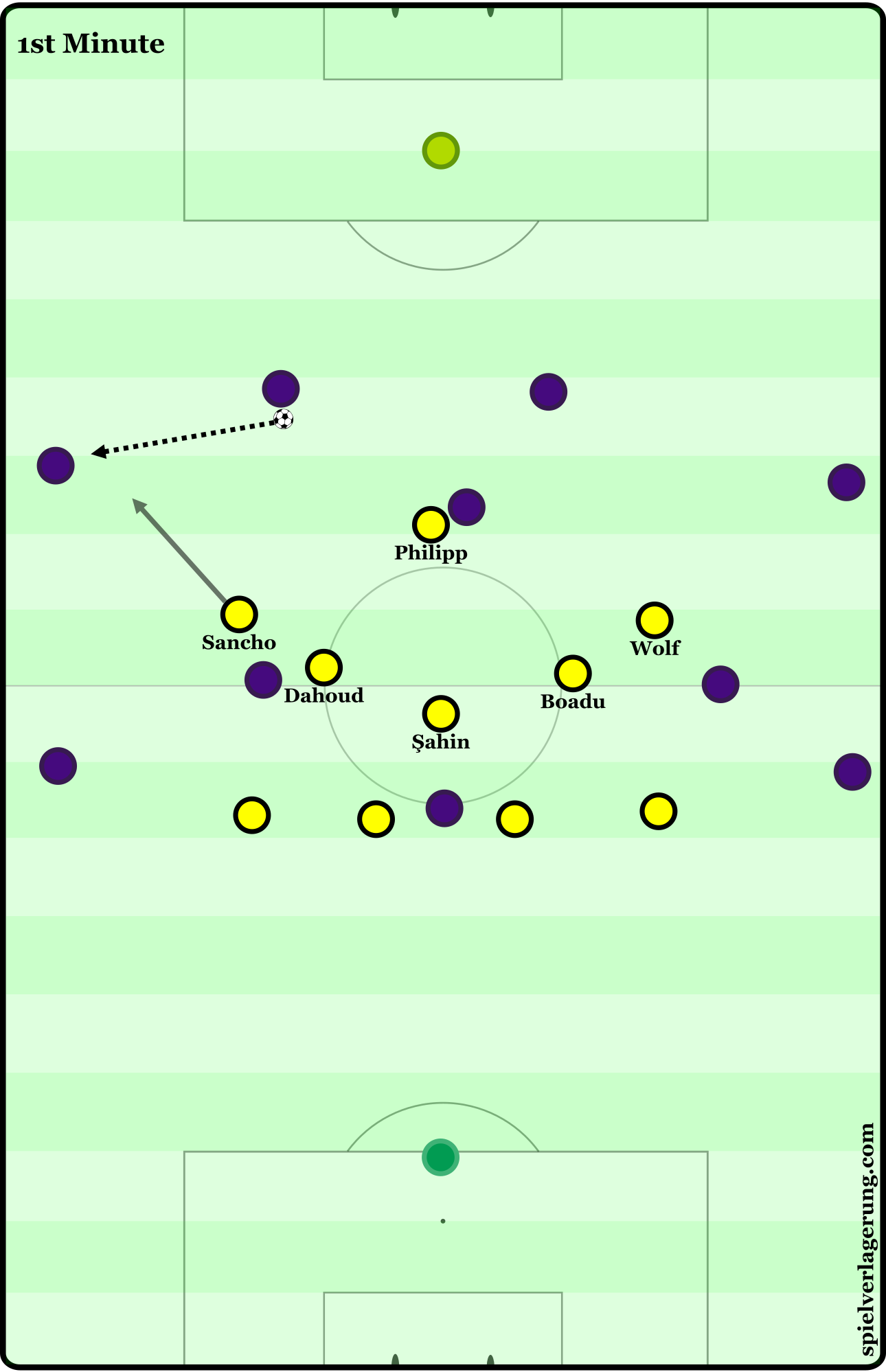
Pressing-Staggering against Liverpool. (This isn’t a schematic display, rather an exact depiction of what happened.)
Dortmund’s defensive approach was perhaps most sophisticated in a 3-1 defeat to Napoli. Philipp once again played as the lone striker in a 4-1-4-1 defensive shape. Götze and Dahoud pushed forward and encircled Napoli’s lone holding midfielder. The two wingers, Jadon Sancho and Christian Pulisic, orientated themselves towards the opposing No. 8s while attempting to take up a 50/50 positioning between the No. 8s and the full-backs. When Götze and Dahoud were outplayed, they retreated immediately and oriented themselves to Napoli’s No. 8s, while Sancho and Pulisic moved to the wings. Thus, Dortmund created a geometrically neat 4-5-1 staggering with an ever so slight arch in midfield. Distances were consistent and decreased accordingly when BVB moved towards one of the wings.
Favre, meanwhile, doesn’t want to compromise the lateral compactness of his back four when the opponent attacks over the wings. Usually Marcel Schmelzer or Łukasz Piszczek would approach the opposing winger as soon as he’s involved in the attack. Against Napoli, however, that rarely happened. Instead, the No. 8 that was closer to the ball drifted from the half-space towards the side and covered the winger. Dortmund’s back four remained in its designated shape.
This kind of element reminds of Favre’s general philosophy which above all aims to build and conserve compactness in the centre. To do so, he’s willing to make concessions in other areas—that is to say allowing the opponent to gain some space. Dortmund’s defence, though, has grown accustomed to a proactive playing style over the last few years and some of the players still tend to hasty actions when the team is too passive. That could cause some openings for the opponent to drive into. The first goal of Benfica was a perfect example of this problem. But it isn’t one Favre will be unable to eradicate.
The Weakness
The build-up is sure to cause the Swiss more headaches. He publicly spoke about the need of improvement in that area after the defeat to Napoli, with good reason. The Italians’ first goal came after an aggressive attempt at pressing, following which Roman Bürki came under pressure and later Schmelzer produced a misplaced pass into the centre of the pitch. Favre said after the match: “When we lose the ball we have problems. We have to improve tactically in that regard. We have to anticipate things better. At times we have to play more simply instead of taking risks.”
Dortmund are fairly easily driven towards the wings. The opponents only have to run at them from the inside with some delay and lead the build-up towards the outside to then put pressure on the full-backs. During the second wave it’s merely about beating Dahoud, Götze or any other BVB player to the pass or to force an imprecise layoff with the first touch. It has also become apparent from the start of the summer that man-orientated pressing can be an effective means against this Dortmund side. Ömer Toprak, for instance, tends to turn away hastily when opponents run at his right foot. Other centre-backs play somewhat imprecise passes when an opponent stands close to their side. Often Dortmund will still try to get out of a situation playing ground passes, which probably doesn’t even displease Favre. The 60-year-old doesn’t want to finish a deep circulation of the ball with a simple vertical ball, rather wanting the ball to “circulate from left to right,” as Favre pointed out recently.
When the opposing team is less active in the first pressing phase, though, BVB seem more secure in possession, but not always more vigorous going forward. When, for example, Şahin dropped between the centre-backs, distances were rarely correct during the test matches. At times it was about Dortmund’s No. 6 and his dropping away. At other times the two centre-backs didn’t fan out wide enough and thus eliminated an actually rather important effect of dropping away.
In other situations Dortmund occupied their own No. 6 space in a 2-4 or 2-5 staggering with a number of midfield players, but gave up any semblance of presence close to and in the opponent’s central bock. Napoli, for example, were able to position their three-man midfield block immediately ahead of Şahin und Dahoud and lead BVB towards the wings. Deep circulation was secured but the way forward went through two outside lanes only. In those spaces Dortmund build relatively firm pairings. Especially Götze and Pulisic form one such pair on the right wing and receive support from Piszczek depending on the timing of the situation. It doesn’t happen as often in the transitional game seeing as the full-backs start from a deeper positioning. We’ve already explained the reason when talking about Dortmund’s desire to stay compact in the back line.
Long balls only played a minor role during the summer. Against Liverpool the Black and Yellows used a few diagonal shifts of play from the deeper lines towards the wingers. However, the subsequent movements shouldn’t always be simple one-on-one dribbles. When the two No. 8s are participating in the deep circulation, they don’t move forward quickly enough to position themselves close to the ball. That’s why long diagonal balls will probably remain an exception to the rule, although they could become more important if Dortmund run into trouble against a high press.
The X-Factors
A new head coach, a slightly refurbished squad—naturally there remain a number of unknowns that will influence Borussia Dortmund’s success in the new campaign. One of those is their vulnerability while defending corners, something every opponent could make use of. Especially against delayed balls into the box or crosses from rebounds Dortmund most often stand on a horizontal line. The staggering of the team is lost fairly quickly. Dortmund can be outsmarted by clever movements from players trying to attack the crosses.
Two names have to be mentioned as special positives. The first is, of course, Reus, who could and very likely will play a hugely important role both on the wing and in the centre. Dortmund will count on the 29-year-old even more should they fail to land another striker. He is beyond reproach in transitional situations and can take decisive influence on slower attacking moves thanks to his ability to change rhythm in the half-space, especially when Dortmund move up through the centre.
Dahoud is another disciple of Favre’s who will profit from being reunited with him. With an anchoring No. 6 behind him and the necessary freedom in the build-up, the 22-year-old can become the secret star of this season. Against Benfica, Dahoud showed himself as a more elegant version of Christoph Kramer. He constantly participated in the build-up and was involved in pressing actions at the other end of the pich within seconds. So far his large presence between both boxes hasn’t been identified as one of the most significant features of his playing style, but that could soon change.
The Prediction
Predictions are hollow words anyway. And in the case of Borussia Dortmund, a lot might hinge on the striker situation, even though there are ways and means to pass that challenge without too much difficulty with Philipp and Reus. Individually, of course, Bayern Munich are once again superior this season, but the German record champs are playing quite formulaic and with too much of a focus on the wings. Bayer Leverkusen are the great unknown. With a budding superstar such as Paulinho and firmly entrenched key performers they might be able to cause a sensation in the Bundesliga. But if Favre manages to smoothen the processes in the build-up and his team internalise them Dortmund could achieve greatness themselves.
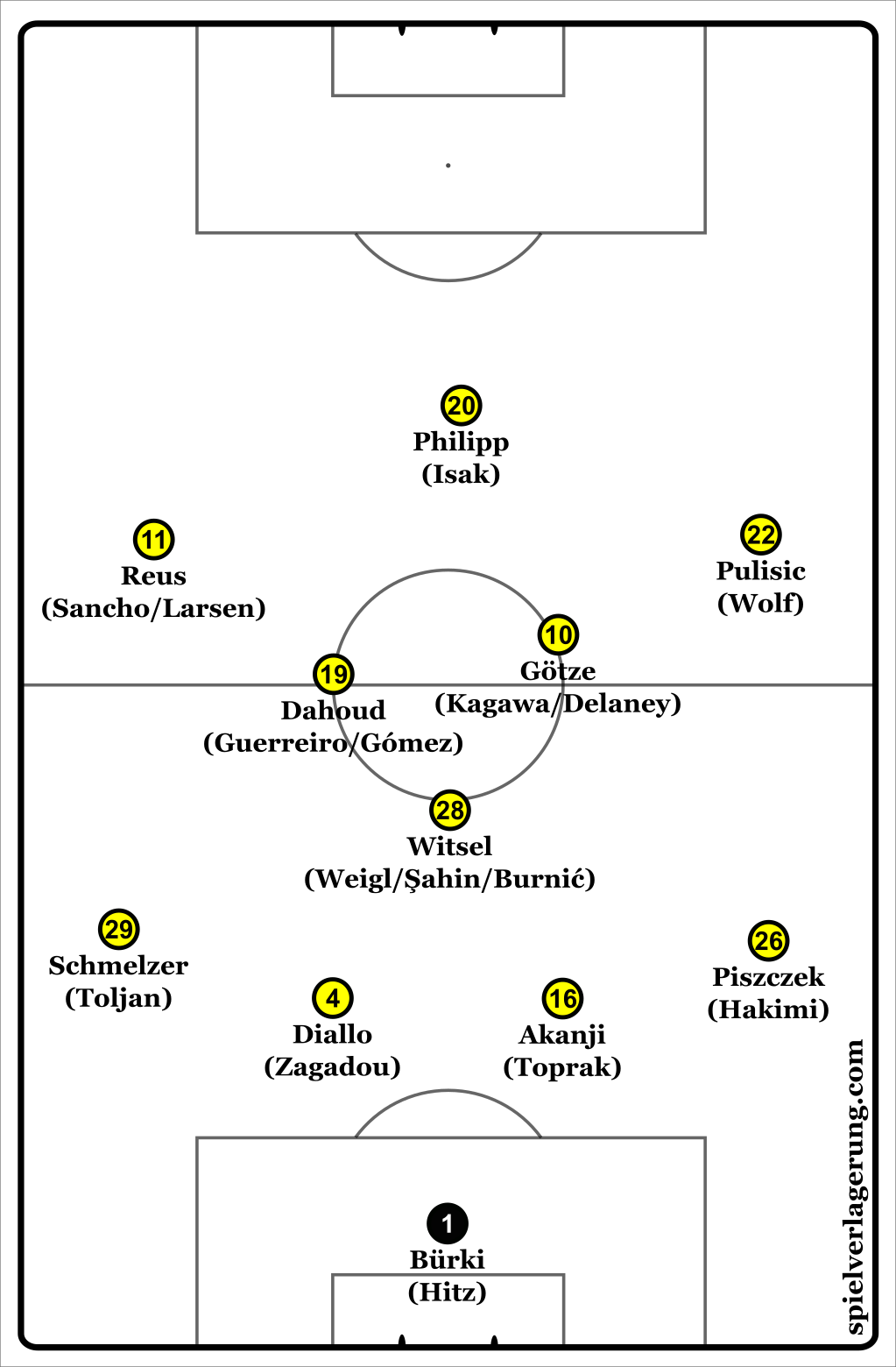
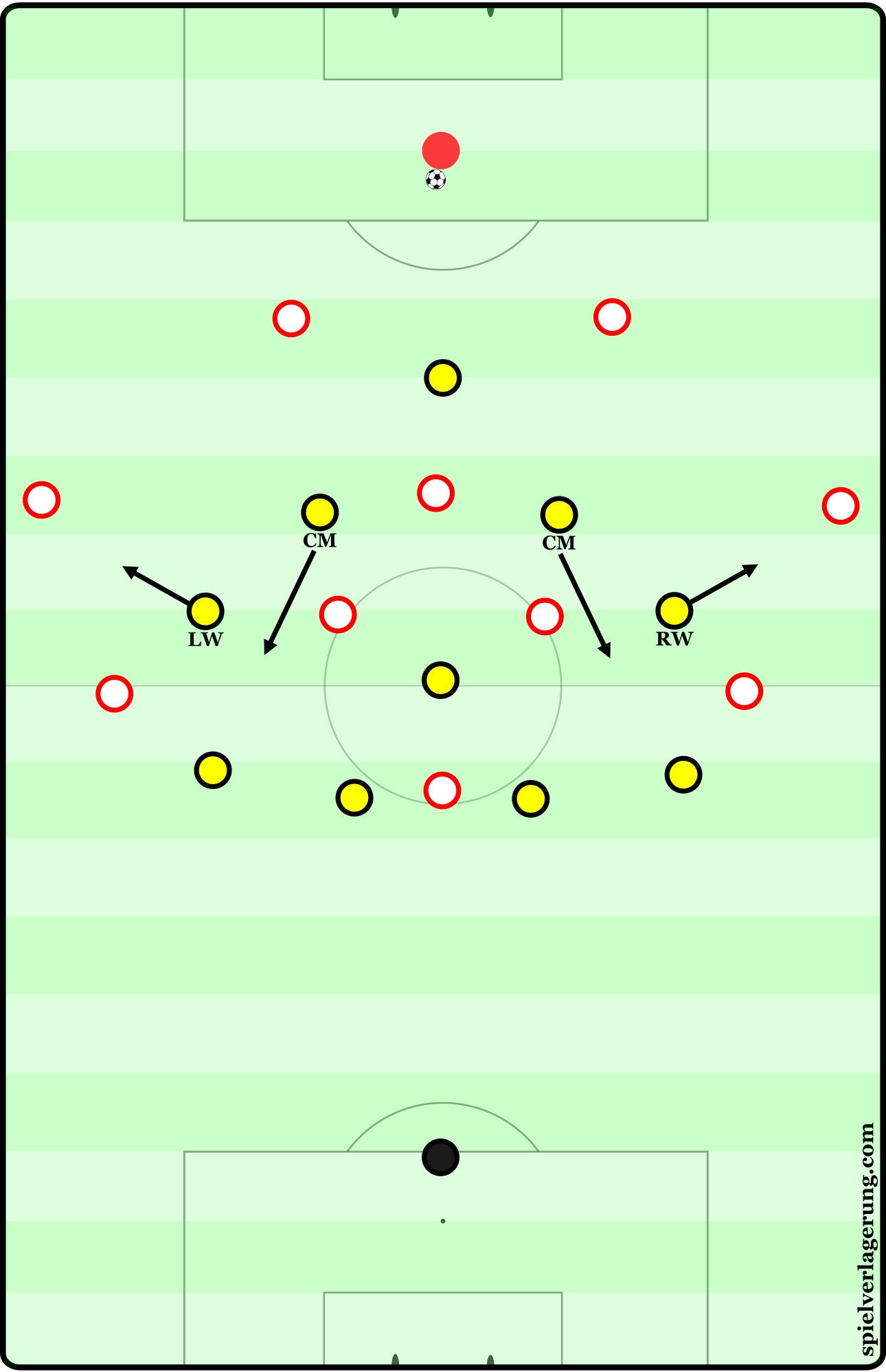
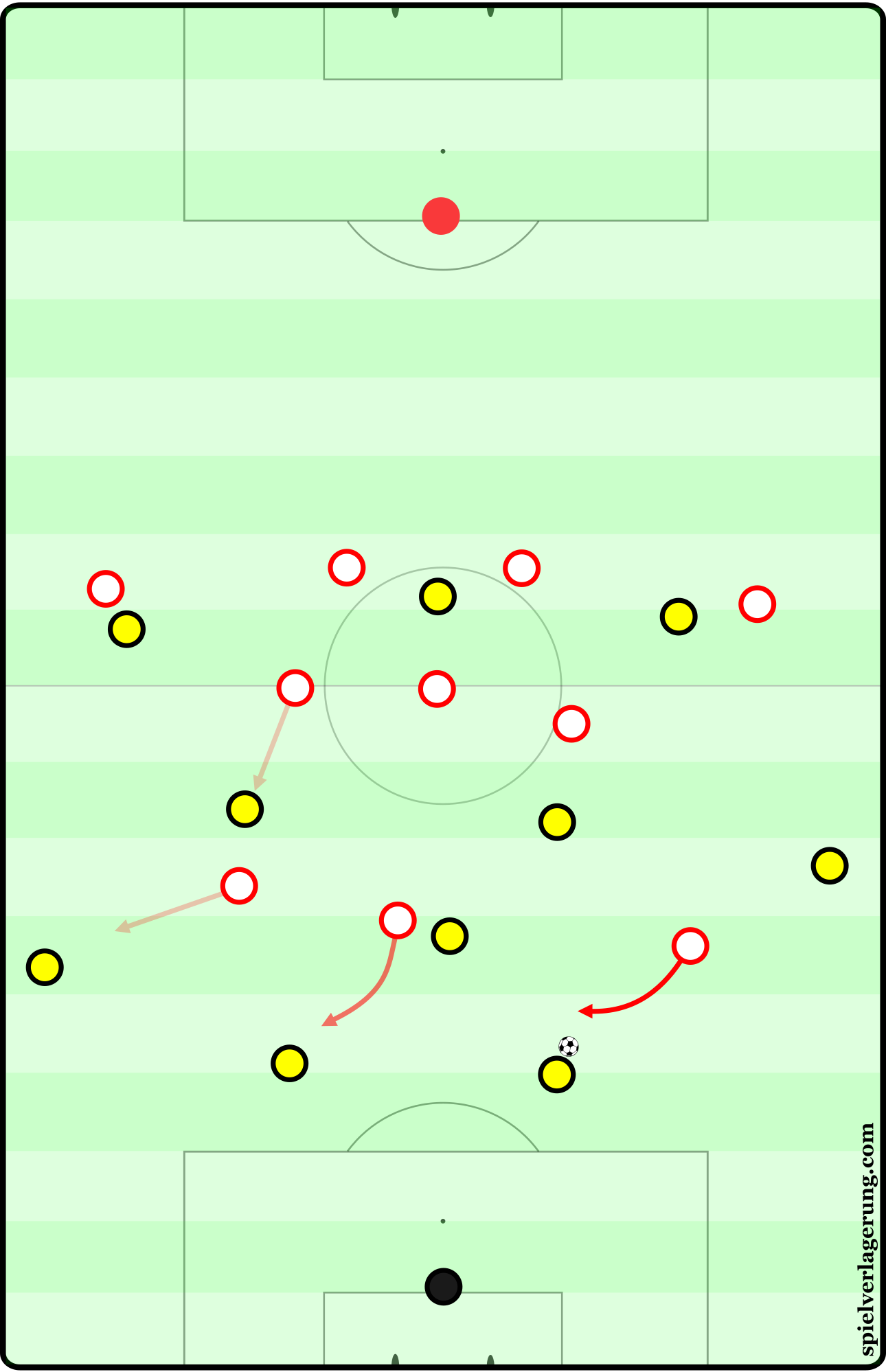
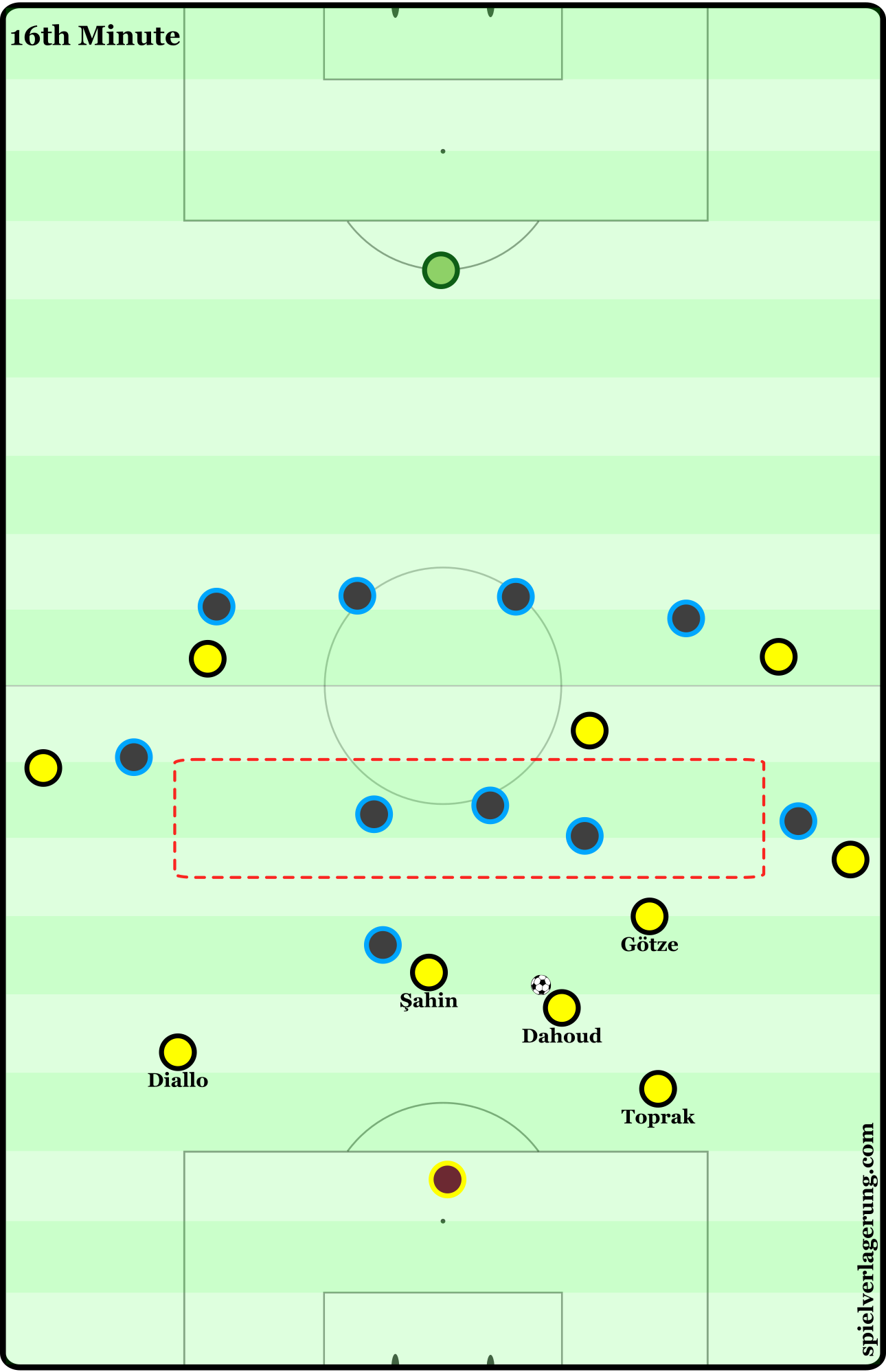
Keine Kommentare vorhanden Alle anzeigen